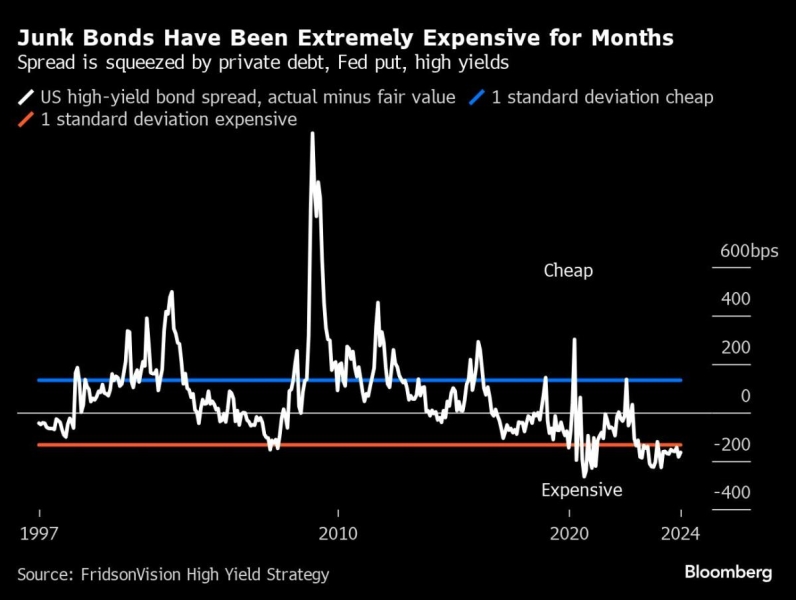
Signing up for Medicare is top of mind for the 4.1 million Americans turning 65 this year — a record number.
Medicare is the primary health insurance for 67 million people in the US, including adults age 65 or older and younger adults with long-term disabilities.
Coverage of Medicare benefits is provided through either traditional Medicare or Medicare Advantage private plans. And it’s complicated.
“Medicare provides great insurance, but it's not a ‘one-size-fits-all’ program,” Philip Moeller, a Medicare and Social Security expert and author of the new book, “Get What's Yours for Medicare: Maximize Your Coverage, Minimize Your Costs,” told Yahoo Finance. “It is easy to get lost in the program’s complexity.”
Medicare coverage begins for most Americans at 65 who are not covered by an employer-provided healthcare plan. The initial enrollment period is the three months before, the month of, and the three months after your 65th birthday. Miss your sign-up, and you start racking up late enrollment penalties and risk gaps in coverage.
The annual Medicare open enrollment period runs from Oct. 15 to Dec. 7 each year. That’s when those who are enrolled can make changes to their coverage, which goes into effect on Jan. 1 of the following year.
Changes include shifting from traditional Medicare to a Medicare Advantage plan (or vice versa), changing Medicare Advantage plans, and picking or switching between Medicare Part D prescription drug plans. The average Medicare beneficiary has access to 43 Medicare Advantage plans in 2024 and is able to choose from plans offered by eight firms.
Read more: What is the retirement age for Social Security, 401(k), and IRA withdrawals?
Moeller
Here's what Moeller had to say about navigating Medicare, edited for length and clarity:
Kerry Hannon: You say that there are three sets of decisions that, if properly handled, increase the odds of making Medicare work for people. Elaborate?
Phillip Moeller: First of all, enroll at the right time. Secondly, get the right package of coverage for you. And thirdly, spend some time learning how to use the coverage. Medicare is a very comprehensive program, but if you don't know what it covers and how to use it, its value to you is reduced.
So if you go back to the first thing, you need to understand the various enrollment periods for Medicare, whether you are aging into the program because you're turning 65, or whether or not you've been working and decide to retire at age 65 or later.
There are two traditional pathways into Medicare. One is traditional Medicare with a Part D drug plan, and usually a Medicare supplement plan or Medigap plan. The second approach, which has become increasingly popular, is Medicare Advantage.
What's the biggest stumbling block for people shopping for Medicare during open enrollment?
The most important advice is to not be cowed by the seeming complexity of Medicare. So many people are sort of frozen. They've struggled hard to make their initial Medicare decision. It was hard for them to do. And they just sort of said, OK, I'm over. I've done that. I've made my initial decision. And they stick with their plan year in, year out.
The reality is that Medicare plans change substantially from year to year, and there's a terrific benefit to actually shopping for your plan. My mantra is, "give yourself half an hour to save 500 bucks."
A couple years ago, I waited until the end to look at my following year's drug plan. And it turns out that the very expensive drug I was taking had been dropped. I wouldn't have been covered for that drug. It would've cost me thousands and thousands of dollars. I discovered it the day before open enrollment ended.
Do you have a favorite tool to help people navigate all the plans and coverage available?
My favorite tool is the Medicare Plan Finder. Every fall before open enrollment, Medicare loads all of the private plan data into this tool. So your private Part D drug plans, your private Medicare Advantage plans, even the Medigap plans, which are run by the states.
You can go into the Plan Finder, enter the drugs that you take and it will show you if the drugs you take are covered by the plan. When you look at the various plans available where you live, you'll see annual estimates of the cost of that plan based on the drugs you've entered into the tool.
Often people shop based only on low premiums, which are very attractive, but I urge people to look at overall out-of-pocket costs during the year.
Phillip Moeller, author of “Get What’s Yours for Medicare: Maximize Your Coverage, Minimize Your Costs.” (Photo provided by Phillip Moeller) (Cheryl A. Magazine)
What does Medicare not cover that shocks people?
It does not cover so-called non-medical custodial care. What this translates into is that Medicare doesn't cover long-term care in a nursing home. If you need that care, you either have to pay for it yourself, perhaps have a long-term care policy, or in many cases, people with these needs over time spend down their resources and qualify for Medicaid.
Anticipating the cost of long-term care is a major financial planning challenge that people often don't even think about until they're close to needing it.
The other big thing is that traditional Medicare only pays 80% of covered expenses for approved claims, which is why a lot of people need a Medigap policy. So I urge people to look carefully at their Medigap plans.
I personally believe that traditional Medicare with the Medigap plan is the best coverage you can get in Medicare. It takes care of most of the gaps. Original Medicare lets you use any doctor in the country. It rarely requires prior approval, whereas Medicare Advantage plans restrict you to care in the network of providers. They often have substantial gatekeeper hurdles in terms of getting access to care. The most notable is prior authorization where you can't just go get care.
How can someone appeal a rejection of care from Medicare Advantage?
The best thing for people to do is to work carefully with their doctors to make sure a procedure is covered before they make the decision to commit to the procedure. Having said that, probably the best remedy for this problem with Medicare Advantage is sunlight, and Medicare Advantage plans have gotten tremendous adverse attention from having this prior authorization process where it turns out that they have denied millions of legitimate claims for coverage.
As this word gets out, public reaction has not surprisingly been very strong and negative. Medicare regulators have responded by basically telling the plans to get their acts together. And it's going to be really interesting in this year's open enrollment period to see how the plans market themselves to see if there's more misleading claims about what the plans will and won't cover.
You have a chapter called “A Ray of Hope for Drug Prices.” Could you elaborate on that?
Most people's attention for open enrollments is focused on prescription drugs. The Inflation Reduction Act that was passed in 2022 does several things. First of all, it did a great job of lowering insulin prices and putting a $35 monthly cap on insulin. That's a great deal for diabetics. Secondly, it allowed Medicare for the first time to negotiate for the price of drugs with drug manufacturers. And in fact, they've already negotiated new prices for a series of 10 widely used drugs. Those new prices will take effect in 2026. And then for several years thereafter, there will be new drugs added to the list. This is going to be particularly important for these miracle weight loss drugs because I expect them to be in the crosshairs of the drugs that Medicare wants to negotiate prices over.
The third thing that is important for next year is the law changing the nature of Part D insurance rules, which have been very complicated. They're getting much easier next year. The maximum out of pocket expense that anybody on Medicare on a Part D plan will incur has been set at $2,000. This is a big deal.
From a business standpoint, it's hardly a situation that the drug companies are going to simply say, oh, we'll just pay this money. They're going to try wherever they can to change the rules. So everybody with a Part D plan has got to be on high alert. They have to look for higher premiums, higher out-of-pocket deductibles. They have to look for reduced coverage of their drugs. Some drugs may be dropped from formularies entirely. Other drugs may be moved to more expensive pricing tiers.
Kerry Hannon is a Senior Columnist at Yahoo Finance. She is a career and retirement strategist, and the author of 14 books, including "In Control at 50+: How to Succeed in The New World of Work" and "Never Too Old To Get Rich." Follow her on X @kerryhannon.





